Tim Raue opened this restaurant in July 2010; he also has two other Berlin restaurants. After training in Berlin he became head chef of Rosenbaum restaurant in 1997, and after several other moves became executive chef of the Swissotel Berlin, where he gained a Michelin star in 2007. From 2008 to 2010 he was executive chef for Adlon before venturing out on his own here. His flagship restaurant earned a Michelin star of its own in 2010, and a second in 2012, which it has retained since.
The wine list ranged in price from €28 to €1,098, with plenty of choice well under €50 a bottle, and even a good range of sakes available. Example labels were Spice Route Winery Chenin Blanc at €36 for a wine that you can find in the high street for €14, J.J. Prum Wehlehner Sonnenuhr Spatlese 2010 at €72 for a bottle that retails at €34, and the lovely Alion 2007 at €140 compared to a shop price of €66. For those wanting to splash out, the voluptuous Guigal 2009 Ex Voto Blanc Hermitage was €228 compared to a shop price of €111, and Talbot 1990 was €212 for a wine that commands a retail price of €117.
The restaurant is accessed via a little courtyard. The dining room has a casual, modern feel to it, with a few paintings on the walls and fairly well placed tables. Tim Raue's wife was running the front of house when I visited. The cooking style reflects Mr Raue's fascination with Asian cuisine, making considerable use of spices. in the evening the tasting menu varies in length from four courses (€118) to eight (€168) as well as there being a full a la carte menu. At lunch you can have from three courses (€38) to six courses (€68) albeit with several dishes having supplements.
An extensive set of nibbles appeared as we looked at the menu. Cashew nuts were flavoured with red Thai curry, yellow radish with Japanese mustard, lily blossoms with mint vinaigrette. Hokkaido pumpkin had a sweet and sour marinade, salmon was pickled with vanilla and grapefruit and scallop ceviche came with green melon, pink lady apple and Thai pepper belly. A version of the classic drunken prawns dish had shrimps flavoured with Hennessy XO cognac and came with thousand island dressing, whilst the only warm nibble was Sichuan style pork belly. This was quite a lot to take in, all served at once, but set the scene for the array of Asian influences to follow. The star was the tender pork belly with a spicy but not overly dominant Sichuan pepper sauce, but all were enjoyable (average 16/20).
Goose liver terrine was coated with matcha tea powder, accompanied by a jelly of white grapes, fresh wasabi paste,nori and jiaogulan cabbage (actually a type of Asian vine known optimistically as the immortality herb). The terrine had silky texture and deep liver flavour, the grapes providing some acidic balance, the other elements complementing the terrine nicely (17/20).
A large, sweet langoustine was marinated with wasabi mayonnaise, prepared with a stock flavoured with fish sauce with mango, carrot, the langoustine tail coated in starch flour and then deep fried in a wok. This was served with deep fried green rice. The overall effect was glorious, the shellfish tender and enlivened by the spices, the rice providing a pleasant additional texture (18/20).
Oyster dumplings were topped with caviar and rested in an elderflower stock with lemon oil, served with cucumber pickled with rice vinegar, dill and tarragon and garnished with a little yellow cress. The dumplings were delicate and the briny oyster flavour worked well with the stock (16/20).
Peking duck dim sum dumplings were superb, topped with crispy duck skin and accompanied by pickled Japanese cucumber, drizzled with duck feet jus. The overall effect was rich and spicy, the duck nicely enlivened with ginger, the vinegar from the pickling cutting through the richness of the meat (18/20).
Lobster was steamed and marinated with sambal and sweet soy sauce paste, accompanied with pomelo pod, kumquat and kumquat jelly and Thai basil. The shellfish was tender, the spices bold but not overwhelming the delicate flavour of the lobster (17/20).
Gilt head bream was fried in brown butter and served with a brown butter foam, Thai water spinach seared in nuac mam fish sauce and a stock of aged rice wine, cep cream, dried grapes and Piedmont hazelnut. The fish was topped with a generous shaving of Alba truffle. This was another lovely dish, the fish accurately cooked and nicely lifted by the rich rice wine sauce, all enhanced by the glorious scent of truffle (18/20).
Pork chin was smoked in the kitchen and served with a jus made from smoked paprika. On the side was a salad of nuoc mam jelly, carrot, pickled papaya, carrot cream, sour tomato, trevisano (a type of radicchio) and basil. The meat had superb flavour, the richness of it nicely balanced by the fresh salad. The pork melted on the tongue and was not overly smoky, just having a gloriously deep flavour and a hint of spice - terrific (19/20).
Roast saddle of venison came with dim sum of the deer liver, cheek and tongue with shiitake mushrooms, candied Chinese walnuts, a salad of both raw and deep-fried Chinese artichokes, an onion sauce and a castelfranco (mild radicchio) salad. The deer had good flavour and the salad carefully balanced the richness of the deer offal (17/20).
An interpretation of Peking duck involved duck breast served inside a five-spice waffle with apple and leek and a jus of duck feet. On the side was a rich duck soup made from the tongue, heart and stomach of the duck, with bamboo mushroom and winter melon. Finally there was a duck liver terrine accompanied by pickled cucumber and a cream of ginger and leeks. This was certainly very different from the traditional way of serving, but it worked well. The duck breast was pink and had good flavour, the waffle standing in for the pancakes usually served. It was good to see the whole bird used, with the terrine again carefully balanced by the pickles, the soup deeply flavoured (17/20).
Dry aged beef was offered with a red wine sauce made from the Chinese wine brand Great Wall, with cheek, tongue and tartare of beef flavoured with Madagascar pepper, alongside a blob of parsley cream, sweet and sour pickled red onion and jelly of redcurrant as well as dried redcurrant. The beef had plenty of flavour that stood up well to the spices and rich sauce (17/20).
A pre-dessert of iced rhubarb came with white chocolate along with raspberry, verbena, some Calpico (a Japanese soft drink) juice and beetroot. The rhubarb was fine but the beetroot seemed an odd pairing, though the verbena was mercifully restrained (14/20).
In place of a cheese board, matured raw milk Gouda was mixed with saffron butter cream and a relish of apricot and pumpkin, along with a little chorizo. This tasted better than it sounds, the relish nicely cutting through the richness of the cheese (16/20).
Dessert was cream of Amedei chocolate with pear sorbet, preserved pear, a jelly of cumin and pear and a stock of jasmine tea and blossom with almond and tarragon. I am not quite sure why so many chefs these days insist on including shrubbery in their desserts, though in this case it was at least subtle. The chocolate itself was very good, and pear is a classic accompaniment that did not need the distraction of the herbs (15/20).
Service was generally very good, with careful topping up of water and wine, the waiters helpful and friendly. The bill came to €135 (£107) a head before tip, with two of us sharing a bottle of excellent J.J. Prum Spatlese. This seemed to me good value given the very high quality of the cooking. It would be pricier at dinner, where a typical bill might come to £135 a head all in. Overall restaurant Tim Raue offers a thoroughly enjoyable experience: service is friendly, the wine list offers plenty of fairly priced wines, the cooking is genuinely inventive and skillful. It thoroughly deserves its two Michelin stars.




















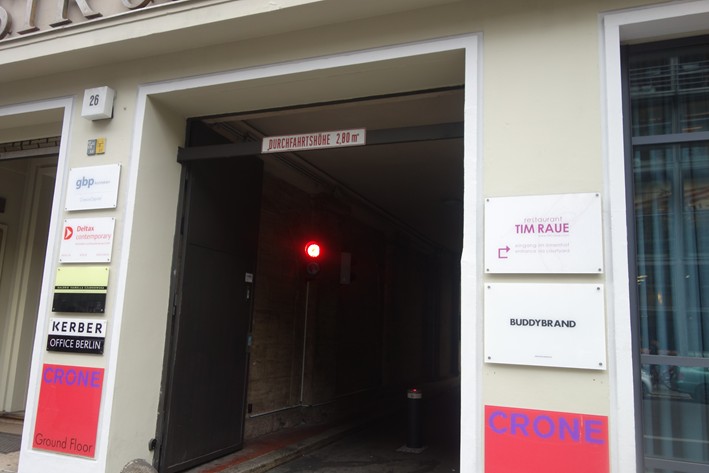

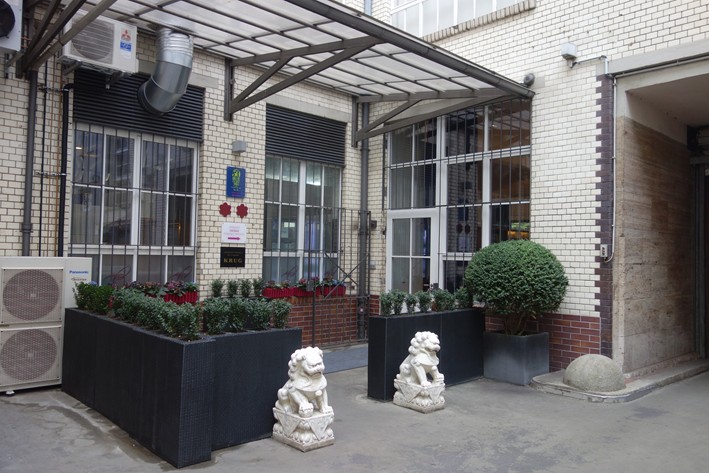
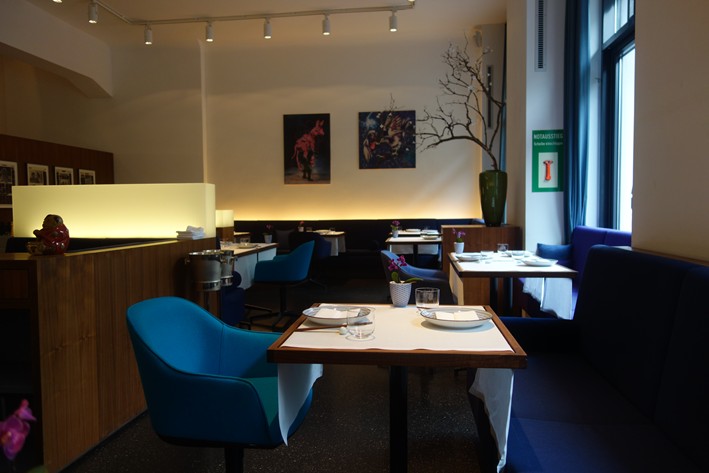
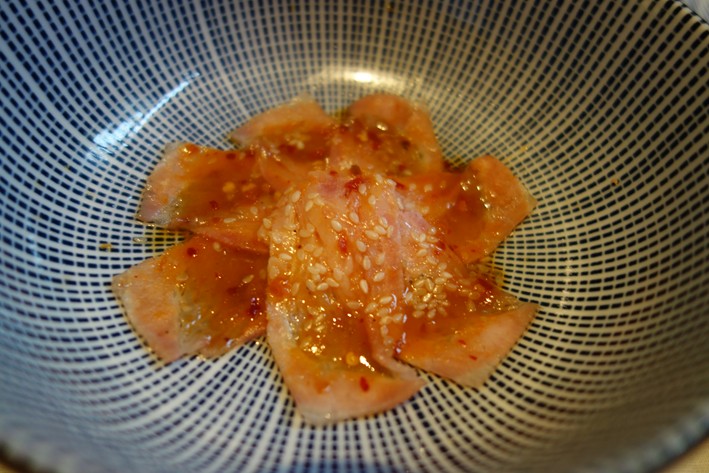

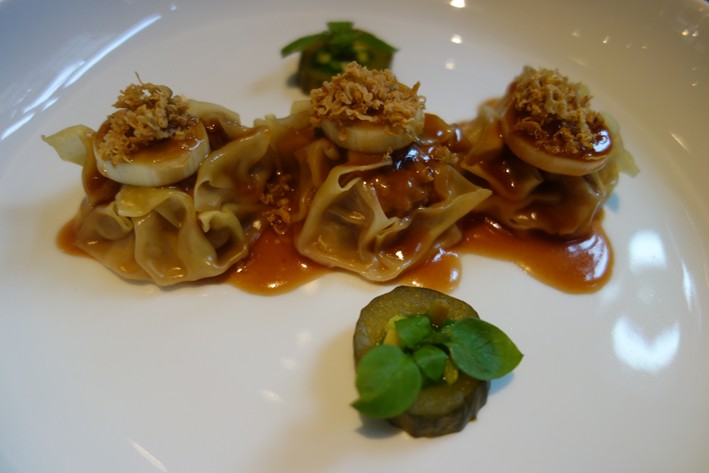


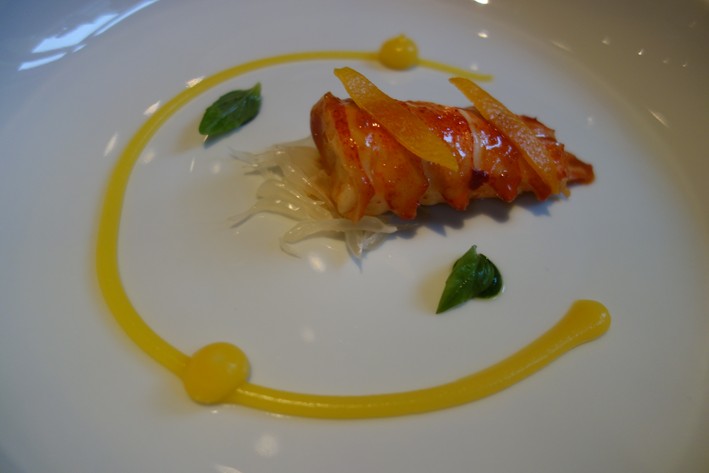
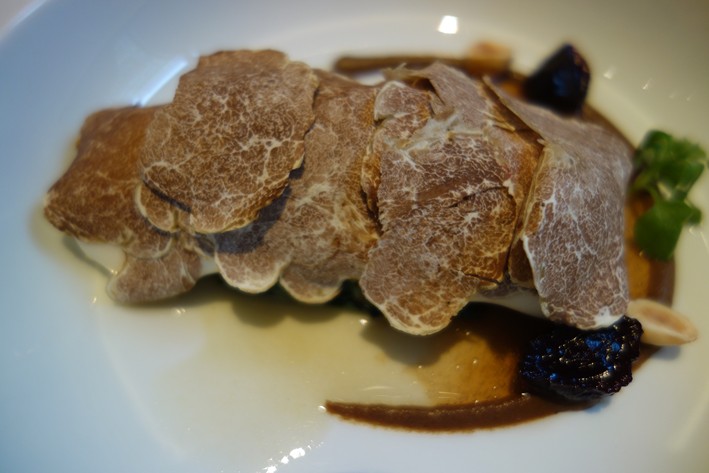
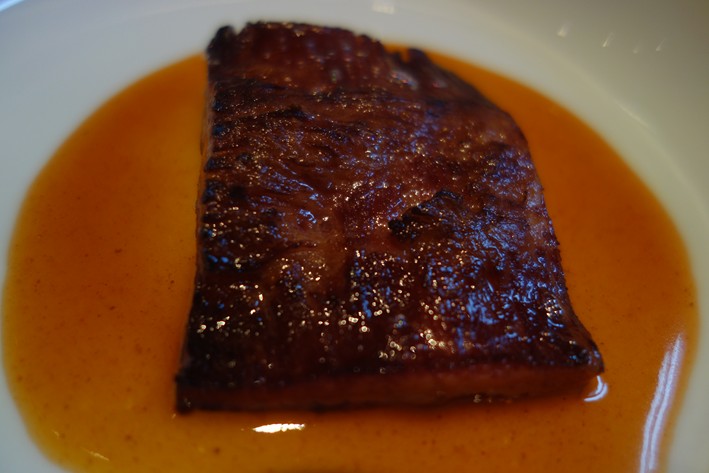
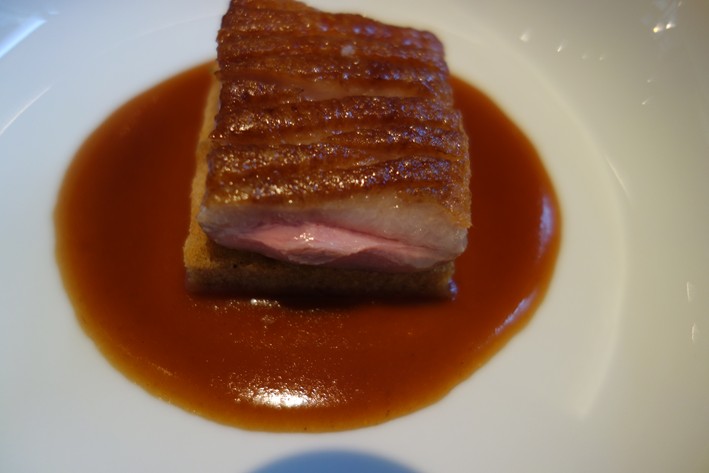
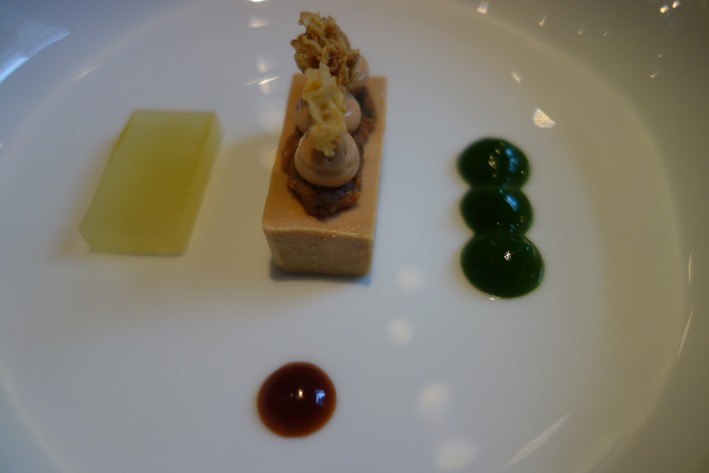

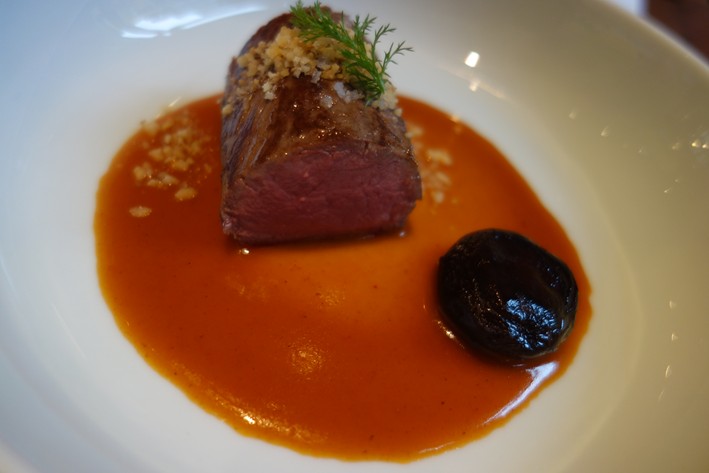
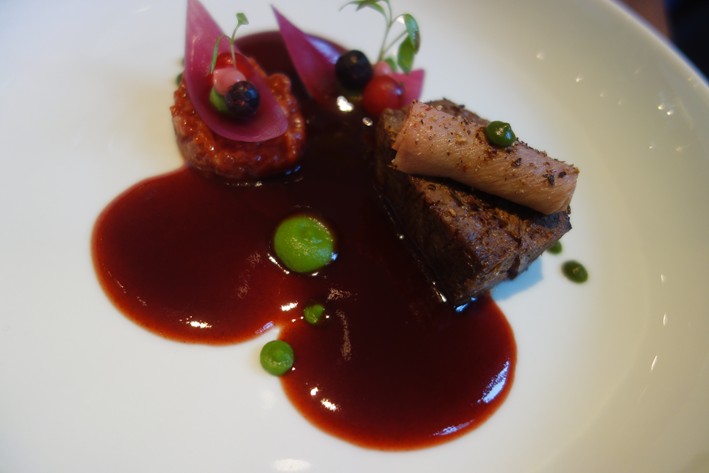
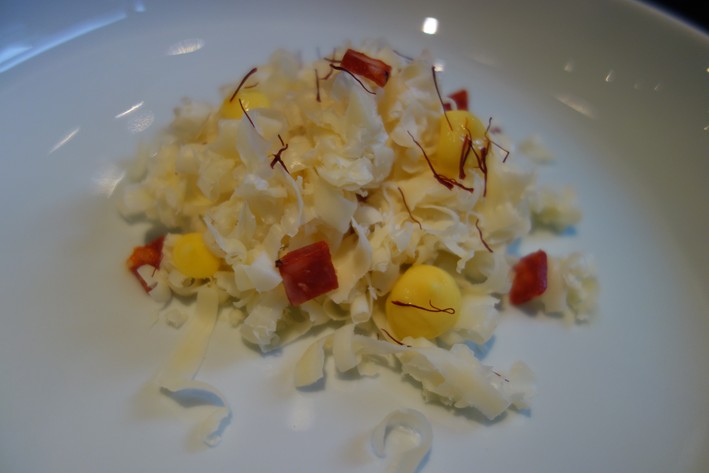
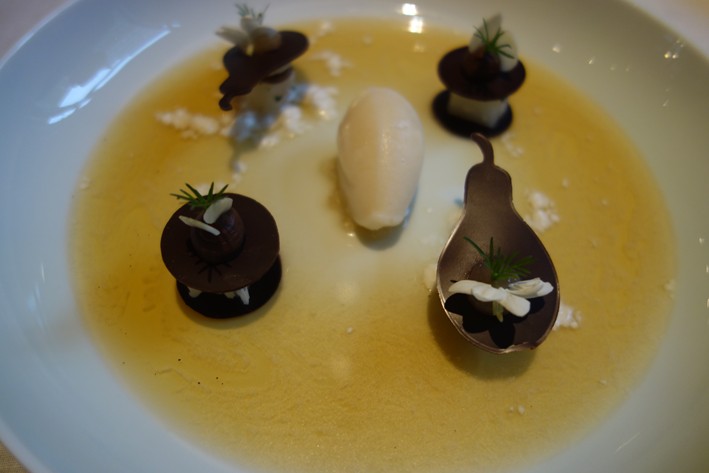

Greg Brozeit
I'm really pleased that you visited Tim Raue and enjoyed the meal. It is one of my favorite restaurants. I was fortunate to have been there for lunches and dinners over the past few years and always found it to be creative and of the highest standard. The pork belly appetizer is exceptional and Raue's take on Peking duck changes a little from time to time and are almost worth the trip alone. The friendly, unpretentious style of the staff, especially the sommelier, makes people unfamiliar or uncomfortable with 2 and 3 star restaurants feel relaxed and welcome. Anyone travelling to Berlin who wants to enjoy a unique culinary experience should put this on their itinerary.
Scott Murray
I am not really an Asian fusion fan, but I love Tim Raue's cooking. The best meal I have had in Berlin. I agree not everyone is perfect, but most is clever and delicious.